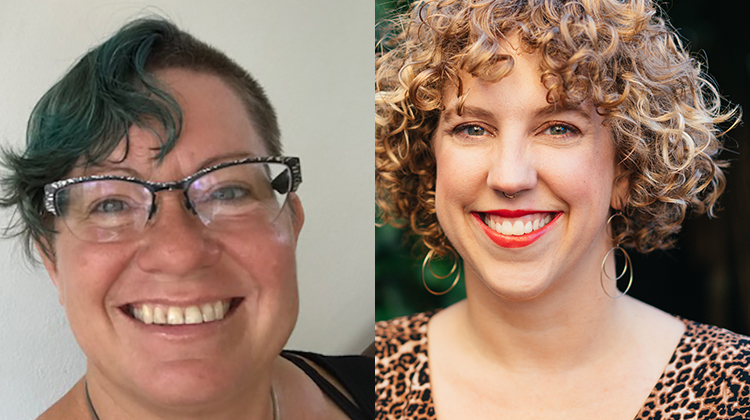Creating Consent Culture Minus the Cringe

Mention sexual consent and cue the discomfort, but however cringy it might be, a conversation around what’s OK and what isn’t needs to be had.
So, what if there was a way to encourage a discussion about consent that might actually be fun?
In their new book, Creating Consent Culture: A Handbook For Educators, Marcia Baczynski and Erica Scott show you how to do that. They have developed a series of exercises that teach skills for consent, increase relational intelligence, and might even lead to some laughter.
The authors share a long experience in sex and consent education which delivers rigour to their book’s content.
“I’ve been doing sex-and-consent education since the mid-1990s, when I started as a peer HIV educator. As an adult, in 2004, I co-founded Cuddle Party, a non-sexual workshop for adults about communication, boundaries and touch. Unexpectedly, overnight, it took off, as participants flocked to our events, and the press wondered why it was so popular and why New Yorkers were suddenly cuddling.
“I learned quickly that people were starved for a felt sense of autonomy over their own bodies, the power to ask for what they want, and respect from others when they set their boundaries.
“Since then, I’ve been teaching these principles to thousands of people, as a coach, workshop facilitator, and trainer,” Marcia Baczynski says.
For Erica Scott, the issues around sexuality and consent have been present in her life since she was a girl.
“I was sexually abused as a child, which led to me having all kinds of problems with boundaries and consent. When I was a young woman I really didn’t feel that I had the right or agency to say no to others, and once I grew healthier and understood that I did have the right to bodily autonomy, I still struggled to say no. As a mom and a landlady to young people I became aware that many people struggle with saying and hearing no.
“After a health crisis in my mid-forties I wanted to do something more meaningful and learned about Marcia’s work. Through her I learned how to teach consent skills in a fun and interactive way. In 2017, I asked her for permission to create a workshop based on her work, but designed to be age appropriate for people aged 10 and up, which led to this book.”
A consent culture emphasises collaboration to create the most mutually beneficial interactions possible.
In their book, the authors hope to dispel the myth that consent is a simple matter of saying yes or no. In reality, there are many factors at play in any interaction, from power differentials to past trauma to systemic racism to different cultural perspectives to poor modeling, and more.
“So, it’s complex, but the tools and skills to feel an embodied sense of consent within oneself and with others are easy to understand, and once felt, they can’t be forgotten.
“I believe we are all culture creators. By treating people with respect, not participating in bullying, extending compassion to others, or simply taking a moment to pause for another person’s real experience, we can shift how others relate around us, particularly in our roles as teachers and parents,” Baczynski says.
Easy steps can include listening for hesitation or the “habitual yes” when asking for something from another, making it clear that a child or student’s boundaries or preferences are welcomed information, working together to find a solution that works for everyone, or simply listening a couple of beats longer than usual for what’s not being said yet.
“It’s not about perfection or “doing it right.” It’s about learning how to stay in relationship with the people around us, particularly our young people, even when other pressures may be present,” says Baczynski.
In a school setting, the workshop outlined in the book can be used in whole, or each exercise can be used on its own. Additionally, the different aspects of consent discussed can be woven into existing curricula and help foster a more consensual school environment.
“The book gives educators and youth facilitators tools that will enable them to teach consent to their students in a fun, interactive and effective way. This would be a great addition to the toolbox of any educator of students aged 10 and up,” Scott says.
“We believe that the basic skills of consent: saying and hearing no, changing your mind, checking in with yourself to see what you want, being clear in your communication, recognising the freeze response – and much more – are skills that need to be learned and practiced, and then practiced some more, before they will become the foundation for a new way of relating.”
Many young people do much of their socializing online, where reduced empathy, reckless statements and painful regret can rule. The book offers tools to create a better culture and improved communication within the virtual realm.
“My hope is that educators and students alike gain a better understanding of how consent has worked and could work in their lives. Most everyone has been taught coercive ways of relating, including boundary-pushing and manipulation. But there is a better way of communicating and relating where we are allowed to ask for what we want and to have boundaries. I really hope for a world where we can lead with kindness and honesty,” Baczynski says.
The authors recommend these resources
Talking Consent: 16 Workshops on Relationship and Sex Education for Schools and Other Youth Settings by Thalia Wallis and Pete Wallis
What Does Consent Really Mean? by Pete Wallis and Thalia Wallis
Boys & Sex by Peggy Orenstein
Girls & Sex by Peggy Orenstein
Trauma-Proofing Your Kids: A Parents’ Guide for Instilling Confidence, Joy and Resilience by Peter A. Levine and Maggie Kline